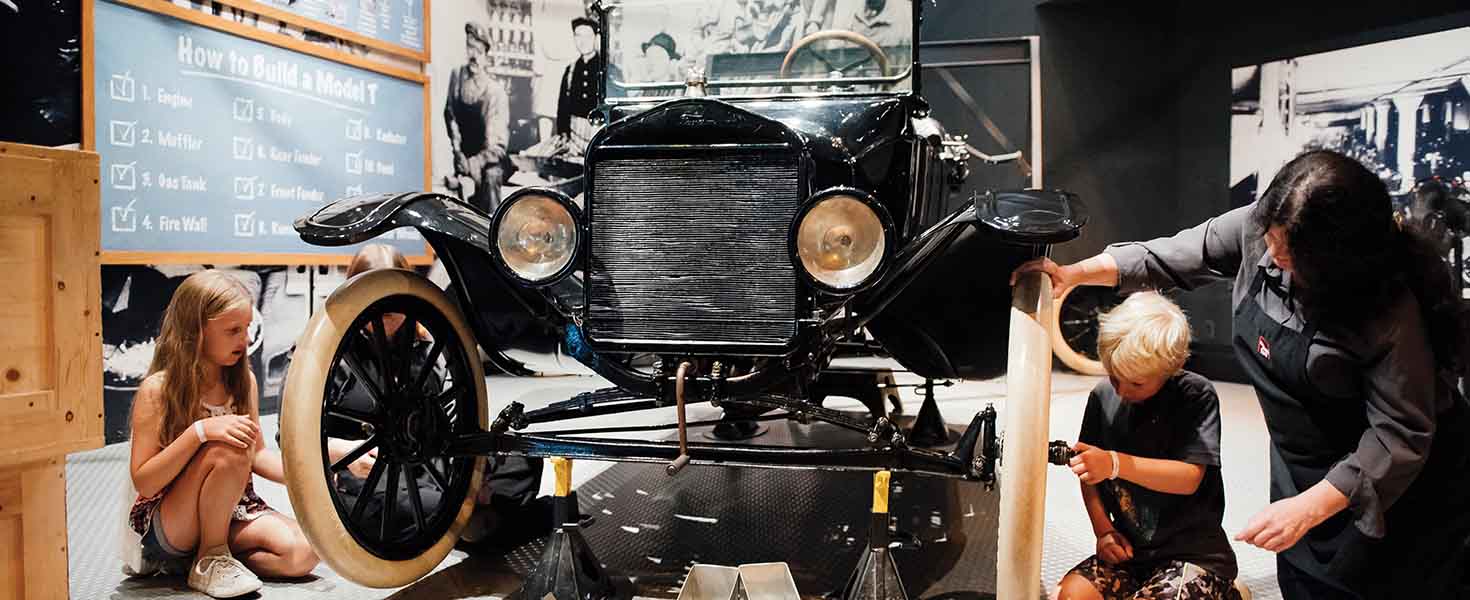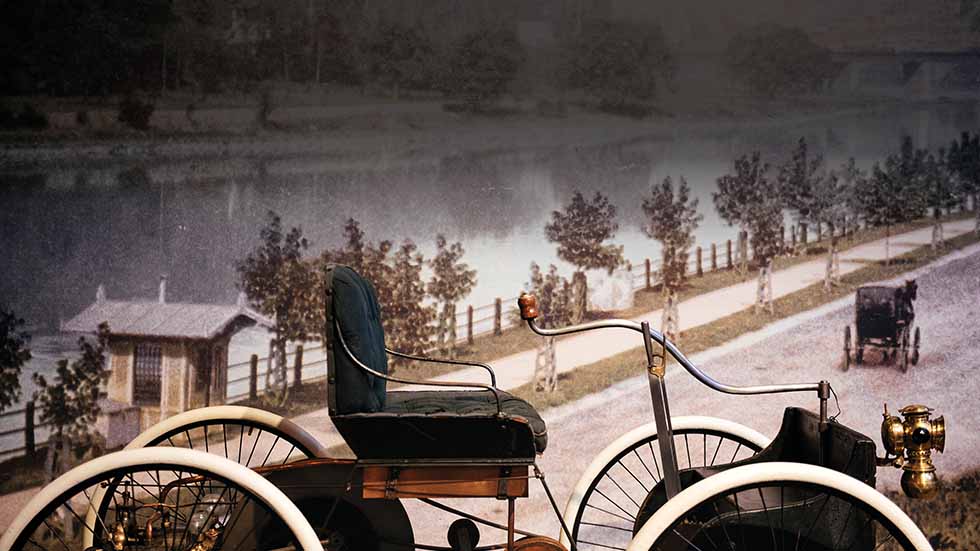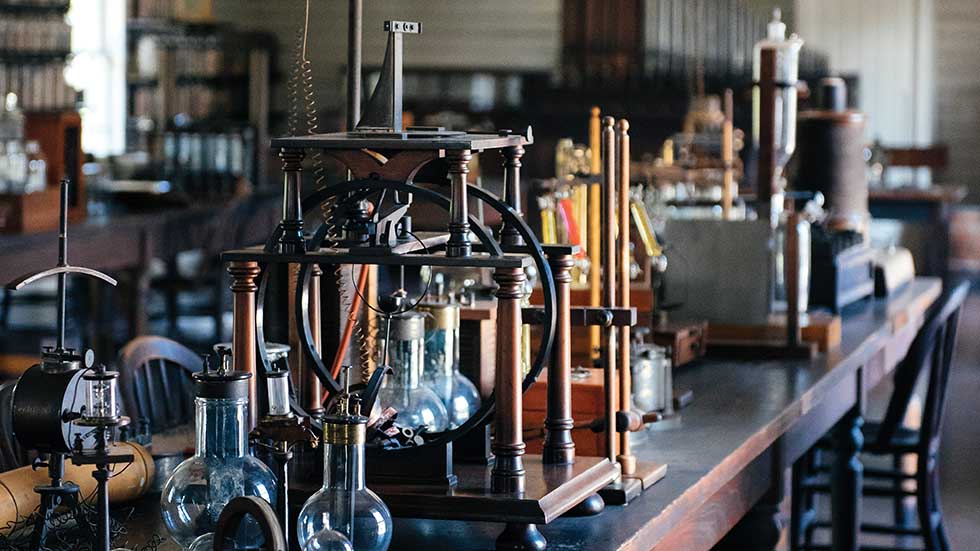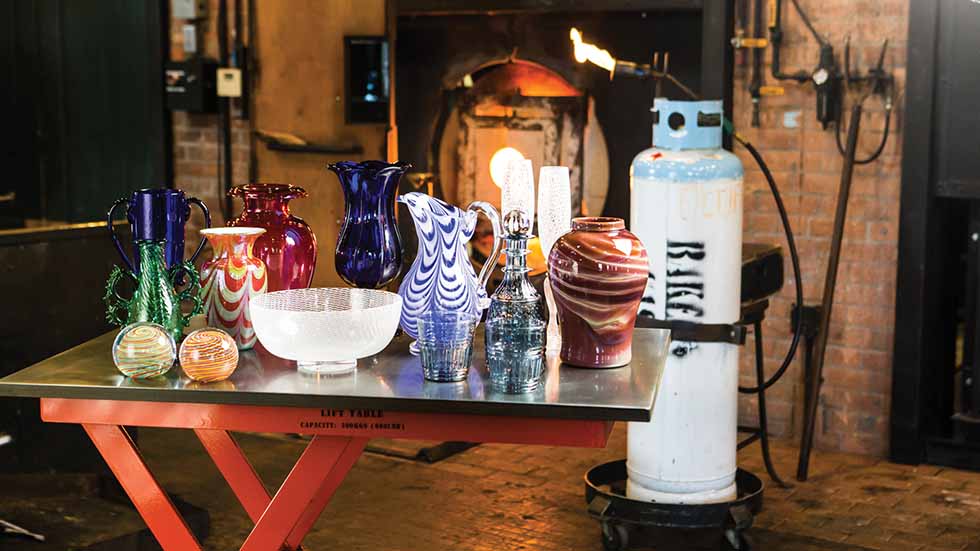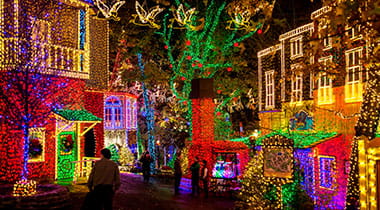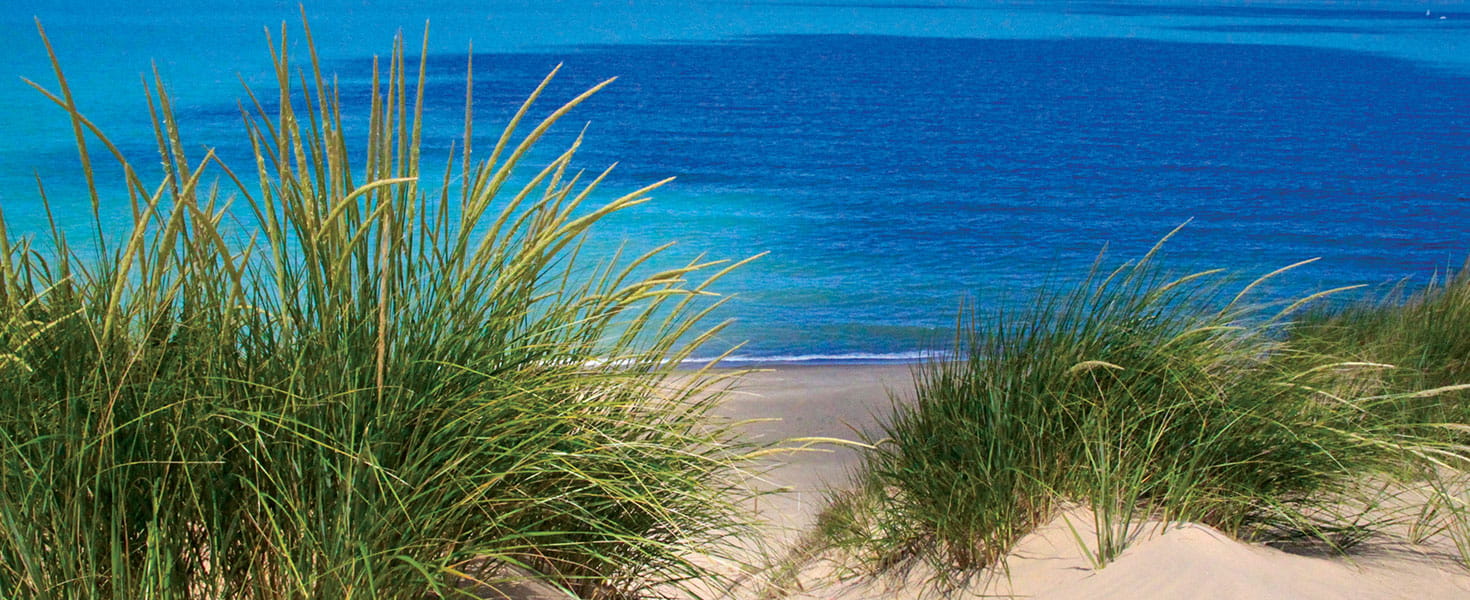It wouldn’t be unreasonable if some people were to take the gray weather that enveloped Dearborn, Michigan, on October 21, 1929, as an omen. After all, the stock market had been behaving oddly for a while—and just one week later, it would crash with a resounding clap of thunder, setting off the Great Depression. But for the luminaries of the time invited by industrialist Henry Ford—among them, President Herbert Hoover, Orville Wright, Marie Curie, Will Rogers and John D. Rockefeller, Jr.—the evening was literally light-filled. The future looked bright, indeed, as they gathered to watch 82-year-old Thomas Edison illuminate a replica of the world’s first workable incandescent bulb. The reenactment echoed a triumph he had initially achieved in his New Jersey lab a half-century earlier—and it occurred in a spot-on reproduction of that very building.
The festivities also marked the dedication of Ford’s new Edison Institute, intended as a school that emphasized learning by doing. Today, it’s better known as The Henry Ford, a sprawling 250-acre complex that represents the fruition of the fervent desire by its namesake to honor the boot-strap inventiveness and homespun values of an America that he came to recognize as endangered.
“Ford was inspired by everyday people and the stuff of everyday life as much as he was by heroes like Edison,” says Cynthia Jones, general manager of Innovation
Experiences at The Henry Ford. “He was interested in collecting the quotidian things that were overlooked by highbrow institutions.”
ONE-OF-A-KIND TREASURES
Last year, some 1.8 million visitors came to explore The Henry Ford, which centers on a museum that offers an astounding array of household utensils, tools and furnishings, not to mention a premier automobile collection.
The 1896 Quadricycle was Henry Ford’s first attempt to build a gasoline-powered automobile. Photo by EE Berger
“We’re an amazing place,” says Jim Johnson, who has worked in various capacities at the complex for more than 40 years. “Yet we’re not nearly as well-known as we should be.”
That sentiment rings especially true when you realize that sprinkled throughout the museum is an enviable greatest hits list of one-of-a-kind treasures. Among them are the bus on which Rosa Parks stood her ground by remaining seated, the camp bed on which George Washington slept during the Revolutionary War, and the chair from which President Abraham Lincoln enjoyed the play Our American Cousin on the night he was assassinated.
THE VILLAGE BEYOND
Beyond the overstuffed cases, the carefully staged vignettes, and the impressive installations of locomotives and harvesters, the Ford also contains an open-air museum: Greenfield Village. Populated with dozens of original and re-created examples of American vernacular architecture—a handful of which are distinguished by their association with historical figures such as Edison—it’s as much an aspect of Ford’s collecting as was his fondness for amassing clocks, spinning wheels and four-poster beds.
Greenfield Village was where Ford’s vision of a tribute to American ingenuity got its start. The effort began in 1928 when, overcoming Edison’s reluctance, Ford finally convinced his good friend to allow him to rehabilitate, then dismantle and transport his winter lab from Fort Myers, Florida, to Michigan.
Edison’s Menlo Park Laboratory in Greenfield Village. Photo by EE Berger
Next, Ford went after the more famous Menlo Park Lab in New Jersey, where Edison had undertaken the experiments that led to the perfection of the electric light bulb. “But by 1929, the facility had been abandoned and had fallen prey to salvagers and fires,” says Johnson, who now serves as director of Greenfield Village.
Not to be deterred, Ford set about collecting as many original bits and pieces as he could and then used them as the basis to re-create the entire lab. Edison, now firmly convinced of the value of these spaces, donated hundreds of artifacts to fill the shelves with the vacuum tubes and other paraphernalia of his experiments.
This judicious mix of the original and the meticulously replicated would serve as the model for Greenfield going forward. “Often a building’s wood trim and moldings were reclaimable, but its flooring or wall lathe or roofing would be gone or in ruins,” Johnson explains. “So that material would be reproduced using historical photos for reference.”
When Ford couldn’t rescue—or purchase—something he liked, such as a town hall or a chapel, he had generic examples built from scratch.
Watch artisans at work making glass, pottery, tin and more inside Liberty Craftworks. Photo by KMS Photography
FORD’S LIFE—RECREATED
Ford’s obsession with preserving architecture dated to a decade earlier when he attempted to restore and save his birthplace—which was about to be demolished to make way for, of all things, an auto-friendly road-widening project.
By the time Ford moved the 1860 farmhouse to Dearborn in 1944, Greenfield Village had morphed into a kind of built memoir for him. Structures as diverse as the one-room schoolhouse Ford attended as a young boy; a lunch wagon he once frequented (think food truck); the brick shed where Ford and his associates completed their first gas-powered vehicle; and the Detroit jewelry store where he bought parts to indulge his interest in horology—all found their final resting place in Greenfield Village.
Ford gradually widened his focus to include buildings related to early American industry, such as original mills found around Michigan and generic reconstructions of artisan workshops, where today modern makers craft pottery and weavings to sell at the museum store.
After installing the Edison labs, Ford also began acquiring buildings where other innovators he admired had lived or worked. These included the family home of Wilbur and Orville Wright and the bicycle shop where the brothers built their “flyers.” Other must-sees are the New Haven house in which Noah Webster lived while writing America’s first dictionary and an Illinois courthouse where Abraham Lincoln practiced as a trial lawyer.
Watch artisans at work making glass, pottery, tin and more inside Liberty Craftworks. Photo by KMS Photography
THE CENTER OF ATTRACTION
There is one collection that everyone should make time for: the cars. The early Fords and the classic roadsters, the rare gems and the hot rods, the presidential limos and the record breakers.
“The design and technology of motor vehicles—from the 1865 steam-powered carriage to a WWII-era jeep to the Prius—readily illustrate the timeline of history,” says Jones, “so it’s no wonder that they are our most popular exhibition. They are a microcosm of the institution as a place that allows you to look back at what people thought the future would be and then to become inspired by how that future turned out. We are, ultimately, a hopeful place.”
The Henry Ford offers a multitude of opportunities and exhibits, including big-screen presentations on subjects ranging from the moon landing to backyard wildlife; in-depth tours; rides on vehicles ranging from a Model T to a steam locomotive; and a visit to the nearby Ford River Rouge Factory, a Ford Company complex where the F-150, America’s best-selling pickup truck, is assembled. The Henry Ford also stages special exhibitions, such as Marvel: Universe of Super Heroes, which continues through January 31, 2021. The exhibition Driven to Win: Racing in America is scheduled to open in early 2021.
For current information on operating hours and procedures, see thehenryford.org.








